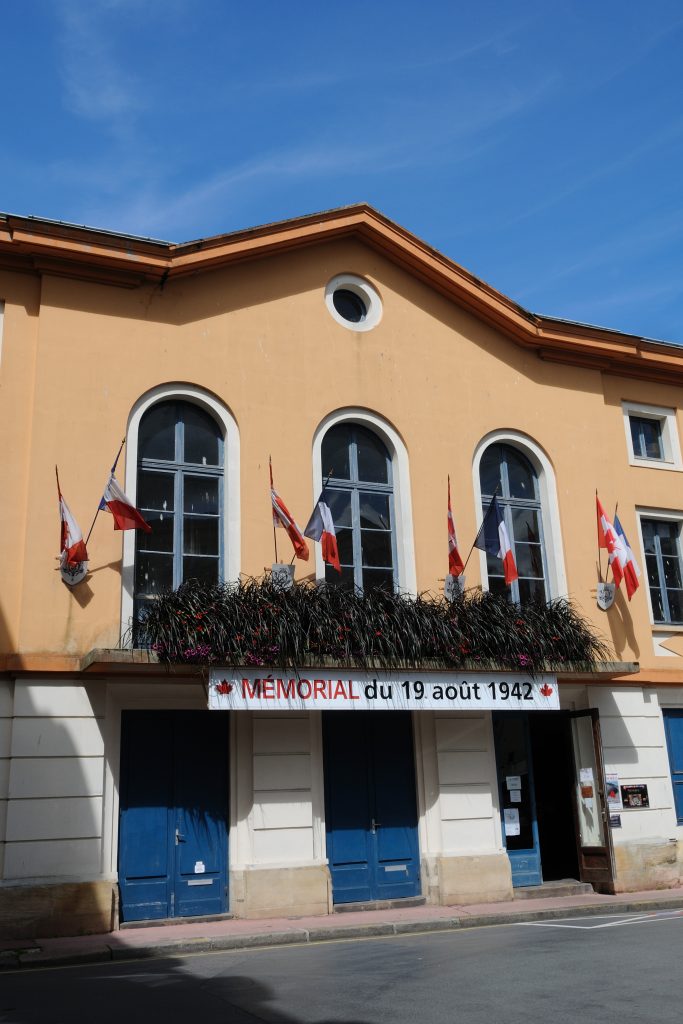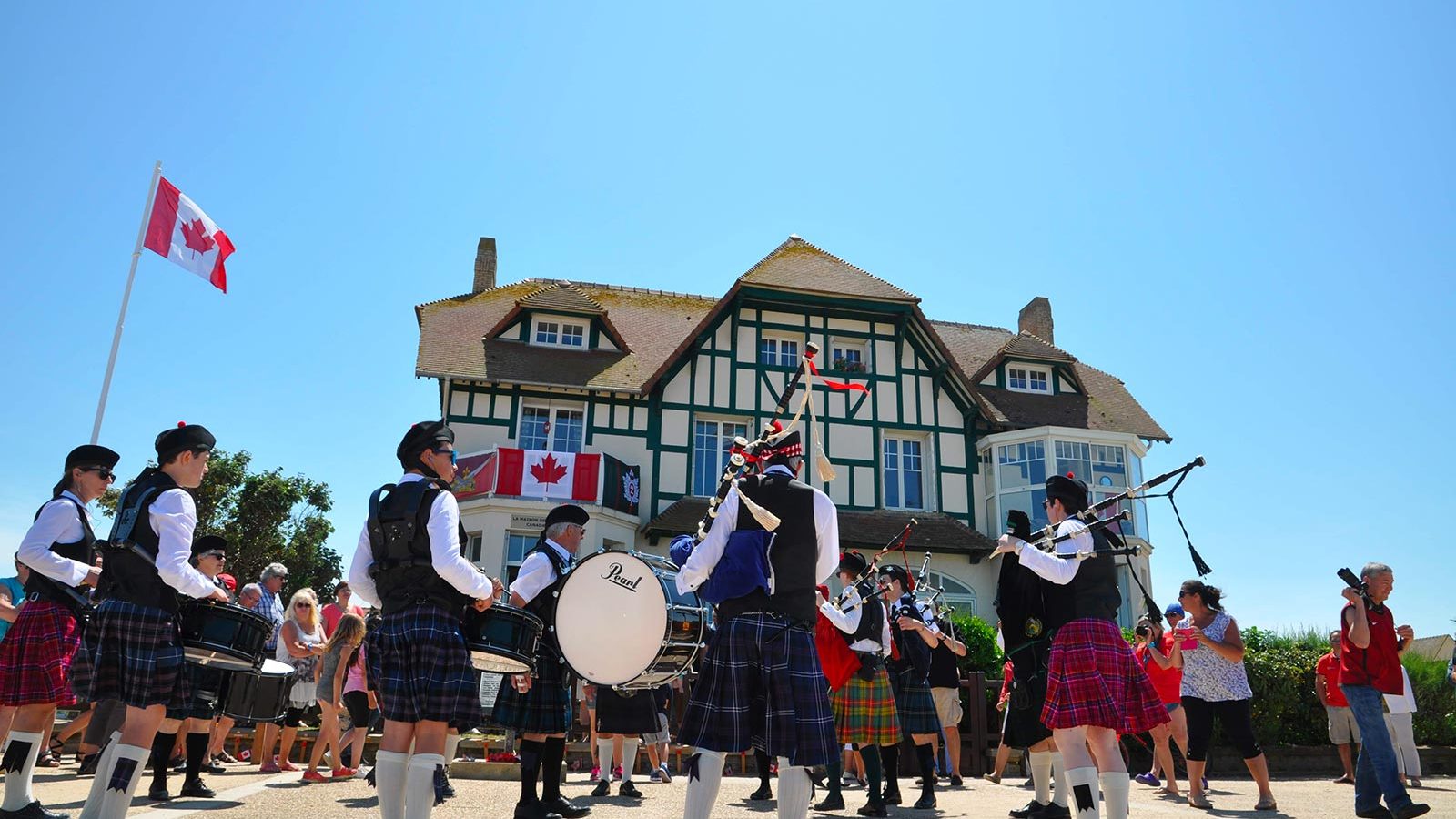Updated on 22 July 2024
Reading time: 3 minutes
From the trenches in the First World War to the Dieppe Raid in 1942 and the Normandy landings on 6 June 1944, the Remembrance Route and its memorial sites pay tribute to the 500,000 Canadian soldiers who fought to free the French on two occasions during the 20th century. Normandy and the Hauts-de-France (Northern France) regions are forever marked by the traces of fierce fighting. As we visit these emotional places, we remember the Canadians, our cousins from across the Atlantic, who made a decisive contribution to the Allied forces in both world wars.
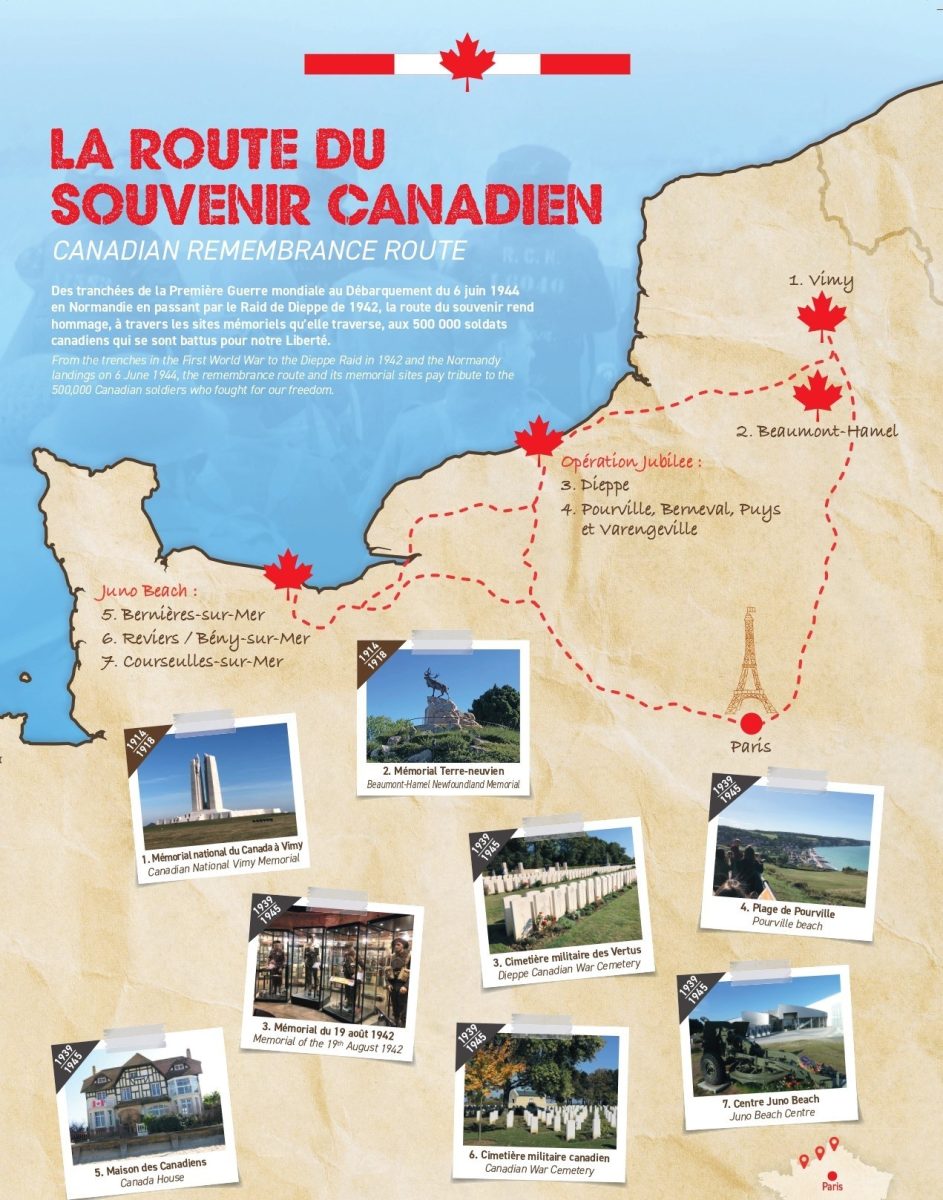
You want to follow the Canadian Remembrance Route on your own, alone, with family or friends, over 4 days? This article is for you.
You want to join a group traveler on an organized tour, please contact the following tourist offices:
Dieppe-Normandie Tourism
Rachel MARTEL
+33 (0)7 62 22 46 29
[email protected]
www.dieppetourisme.com
Lens-Liévin Tourist Office
Eléonore FRANCOTTE
+33 (0)3 21 74 83 17
[email protected]
www.tourisme-lenslievin.fr
The main sites and museums on the Canadian Route of Remembrance
Days 1 and 2
First World War sites in the Hauts-de-France (NORTHERN FRANCE REGION)
The European tensions that would lead to the First World War in 1914 were far removed from the realities of Canadians at the time. Still, when the British Empire declared war on the Austro-Hungarian Empire in August of that year, the Commonwealth dominions, including Canada, were also automatically at war. The country was still young, sparsely populated, and had a militia of only a few thousand reservists. By the end of the conflict, Canada had made significant contributions to the great victories of 1917, including at Vimy Ridge, and 1918, standing out for its leadership and its ability to deftly come up with effective ways to emerge victorious from battle. Some Canadian victories were truly astonishing, and Canada’s troops, who had begun the war as inexperienced, poorly organized soldiers, had transformed into a cohesive, incisive and formidable military corps, attracting the attention of the international press for the first time.
The First World War was the deadliest conflict in Canada’s history, with no fewer than 66,000 Canadians losing their lives to it. This great national loss, combined with notable successes and victories, instilled a sense of patriotic pride in that generation of Canadians.
Canadian National Vimy Memorial
The Canadian National Vimy Memorial towers above the Lens Plain from atop Vimy Ridge, about 10 kilometres north of Arras. It is located on the very site of the combat that occurred in 1917.
Inaugurated on 26 July 1936 in the presence of King Edward VIII and French President Albert Lebrun, this creation by Canadian architect and sculptor Walter S. Allward pays tribute to the 66,000 Canadians who perished in the Great War, 1% of the country’s population at the time.
The Visitor Education Centre, inaugurated in 2017, gives visitors insight into the history of Canada before, during and after the First World War. Its modern architecture blends well with the landscape around it, establishing an atmosphere that is conducive to awareness and commemoration.
The permanent exhibit, We Will Remember, provides illustrations of Canada’s and Newfoundland’s participation in the First World War, and a temporary exhibition space regularly hosts new exhibits as part of the centre’s programming.
During the free guided tours led by Canadian university students, visitors can explore the underground tunnels that were used to capture Vimy Ridge. Preserved trenches and two on-site military cemeteries wrap up this comprehensive tour, leaving visitors with a better understanding of the impact of Canada’s involvement in the conflict.
Click HERE for a guided tours or self-guided tours
Beaumont-Hamel Newfoundland Memorial
This memorial is located in the Somme department, close to Beaumont-Hamel. At the top of a mound in the middle of the memorial, stands a bronze caribou, the emblem of the Royal Newfoundland Regiment. The view from there is striking: a maze of trenches, ground dotted with shell holes, and No Man’s Land.
The funds needed to preserve the trenches were raised by the widows of Newfoundlanders back in the 1920s. The site is one of only a handful to offer a general view of a complex system of trenches going from the rear to the front, giving visitors the unique experience of walking in the footsteps of the soldiers of 1916.
Click HERE for a guided tours or self-guided tours
Other sites to discover nearby in the Hauts-de-France
• Wellington Quarry, Arras: enter one of the most secret places in military history, discovering a true underground city, where more than 20,000 Commonwealth soldiers prepared the largest surprise attack of the First World War, the Battle of Arras.
• The paths of remembrance: Monument of the 37th British Division, French National Necropolis of La Targette, Scottish Highlanders’ Cross, New Zealand Memorial, Canadian Memorial Park… through twenty key stages which mark out the territory, let us pay an eternal homage to all the combatants fallen at the front,
• The Ring of Remembrance, Notre-Dame-de-Lorette: this contemporary memorial, a must on the Great War memorial paths, is located on the site of the Notre-Dame-de-Lorette Necropolis. It forms a huge ellipse engraved with 580,000 names of soldiers who died during the Great War, from both sides, without distinction of rank or nationality. A very strong symbol of international peace,
• The Arras Belfry: from the top of its 75 metres, you can enjoy a magnificent panorama of the town of Arras and its surrounding countryside,
• The Louvre-Lens Museum: it houses the collections of the Louvre Paris and presents them through a new scenography in the Gallery of Time: here, no chronological or thematic partitioning, one embraces in a single glance 5000 years of history of art and humanity,
• The Nord-Pas de Calais coalfield: for nearly three centuries, over a 120km long and 12km wide area, the soil and earth were mined to extract coal, which was used to feed, heat and transport the entire country. Since 2012, the coalfield has been inscribed on the UNESCO World Heritage List as a ‘living cultural landscape’. It is made up of slag heaps shaped by the miners, culminating at an altitude of 180 m.
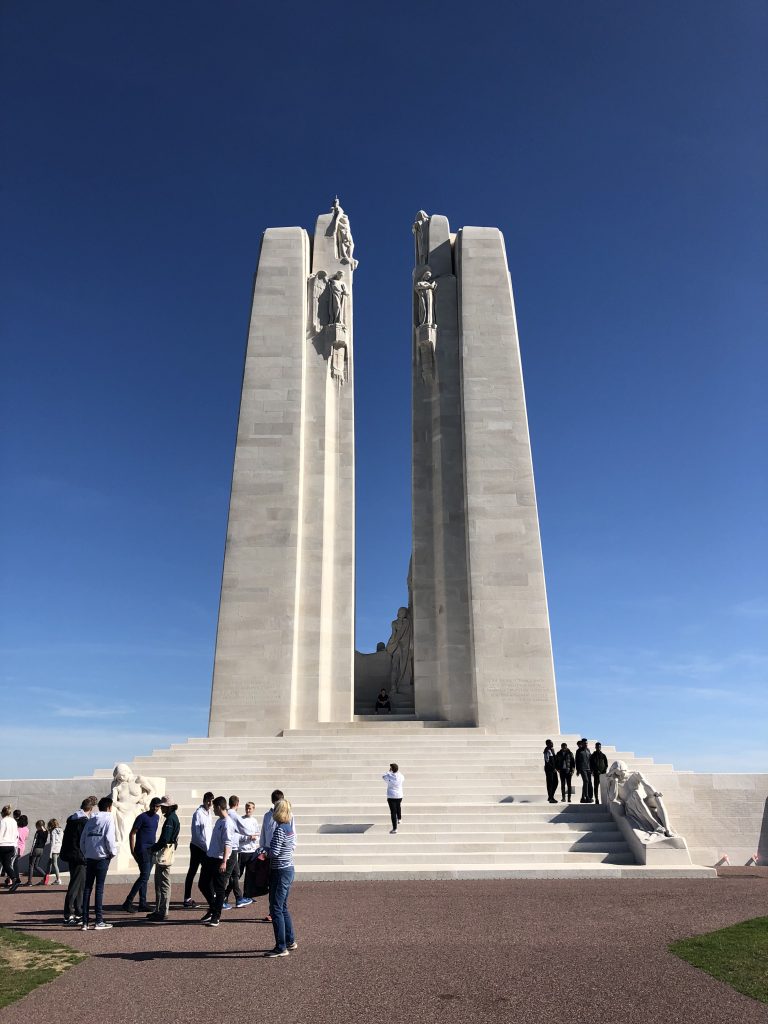
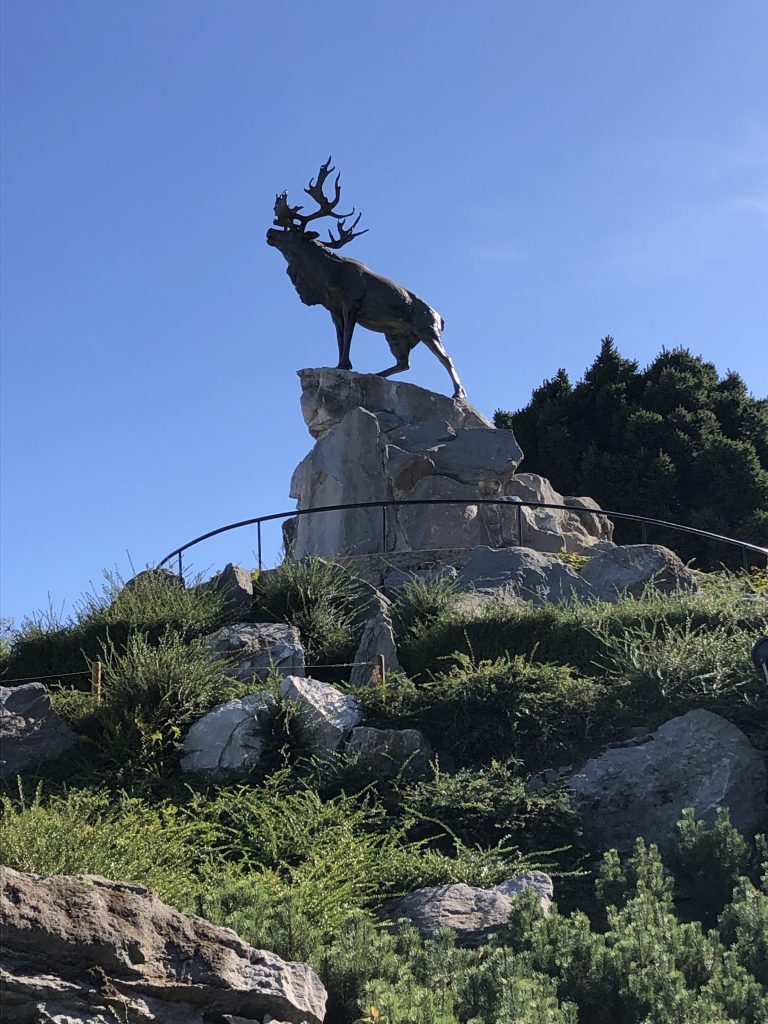
DAYS 3 AND 4
World War II sites and museums in Normandy
In the 1930s, in a context of political and social instability, Nazi Germany attempted to impose its domination on Europe. In September 1939, Canada declared a state of war and joined the Allied ranks. The nation committed human, industrial and financial resources to an ongoing war effort and mobilized the largest military force in its history. At that time, 1 million of the country’s 11 million inhabitants served in its armed forces.
At sea, on land and in the air, Canada participated in the great campaigns that would lead to Germany’s surrender and the restoration of peace. 45,000 Canadians lost their lives during the Second World War, including 5,500 in the Battle of Normandy and 381 on D-Day.
19 August 1942 Memorial in Dieppe
This site is dedicated to the memory of the soldiers killed during Operation Jubilee. It is temporarily housed at the Petit Théâtre (thatre) in Dieppe, an Italian-style theatre built in 1826, while awaiting the restoration of the memorial.
It features many documents, objects and models in homage to the soldiers, sailors and aviators who participated in the Raid, as well as a film about Operation Jubilee.
Canada house in Bernières-sur-Mer
The first house to be liberated after the landings on D-Day, Canada House in Bernières-sur-Mer was taken over by the Queen’s Own Rifles of Canada regiment very early that morning. The Canadians had been instructed not to destroy it, as this Anglo-Norman style home dating from the early 20th century represented a landmark on Juno Beach. It appears in many official photos of the Normandy landings and in films commemorating D-Day.
The house was occupied by the British Admiral Cooper, who used it as his general headquarters up until September 1944. From there, he coordinated supply runs for the Allied troops as they moved farther inland.
Guided tours bookings by email only [email protected]
Juno Beach Centre in Courseulles-sur-Mer
The only Canadian museum on the Normandy landing beaches, this interpretation centre presents the civilian and military war effort mobilized by the entire population of Canada and on the different fronts of the Second World War.
Through films, interactive kiosks, audio archives and objects, it pays tribute to the 45,000 Canadians who lost their lives during the Second World War, including 5,500 in the Battle of Normandy and 381 on D-Day.
Other sites to discover nearby in Normandy
• The Vertus Canadian military cemetery in Hautot-sur-Mer: it contains more than 950 military graves, men and women, including 707 Canadians,
• The beaches of the Côte d’Albâtre at Puys, Pourville and Varengeville-sur-Mer, where Operation Jubilee took place on 19 August 1942; to be admired during a boat trip,
• The Canadian military cemetery at Reviers/Bény-sur-Mer: located a few kilometres from Juno Beach, the Canadian cemetery at Reviers-Bény-sur-Mer is, along with that at Bretteville-sur-Laize, the second Canadian military cemetery in Normandy. It houses the bodies of more than 2,000 Canadian soldiers who fell on 6 June 1944 and during the first weeks of the Battle of Normandy,
• Juno Park, Courseulles-sur-Mer: this coastal strip was the scene of fierce fighting on 6 June 1944, the day of the D-Day landings, and still contains many remains of the defence system that made up the Atlantic Wall: tetrahedrons, tobrouks, bunkers (which can be visited in season) and Royal Canadian Artillery guns,
• The fine sandy beaches of the Côte de Nacre such as Saint-Aubin-sur-Mer, dotted with late 19th century villas and white beach huts,
• The Fontaine-Henry castle: Classified as a historical monument, the castle was built at the beginning of the 13th century, and since then it has never stopped being embellished. Never sold, it has been handed down from generation to generation since its foundation by the de Tilly family, to the Marquis of Oilliamson, its current owner. With 16 metres of framework, its roofs are reputed to be the highest in France. It is also known for its sculpted facades which make it ‘a Loire castle lost in Normandy’.

